What to See, Experience, and Explore at Miami Art Week 2025
We checked in with our former podcast guests who will be inching through Miami traffic, unveiling new works, signing books and revealing new projects this year.
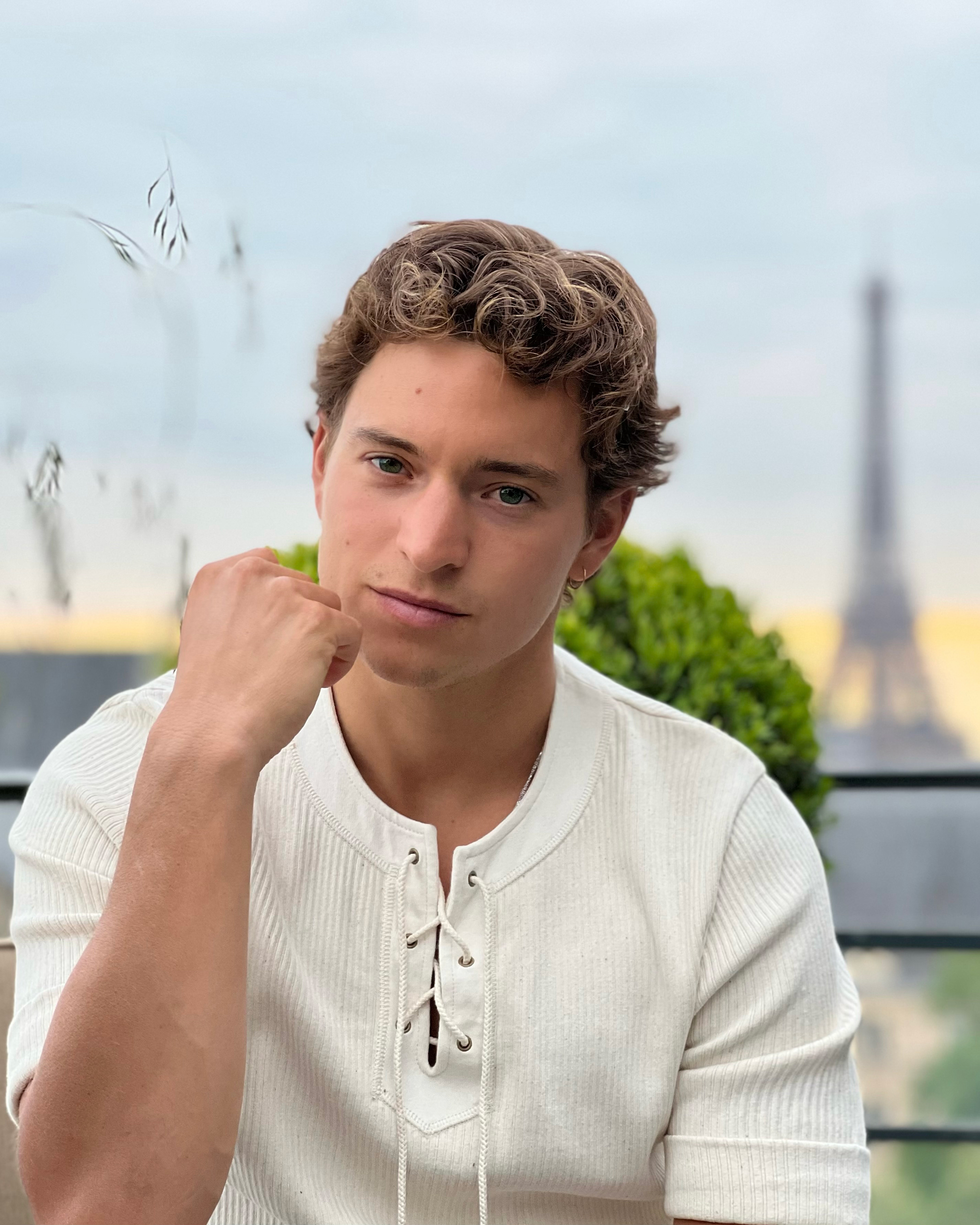
There’s a new generation of jewelry designers that is bringing back artistry, narrative, and a sublime sense of luxury. On this episode (with some guidance from Levi Higgs, influencer and Head of Archives and Brand Heritage at David Webb), Dan speaks with two emerging talents: Emmanuel Tarpin, a French wunderkind known for turning his love of nature into one-of-a-kind, high jewelry pieces; and New Yorker Jean Prounis, whose eponymous line Prounis creates fine jewelry inspired by the natural world and her own family’s unique story.
TRANSCRIPT
Emmanuel Tarpin: I always wanted to create something quite small. Actually, I’m not dreaming about building an empire because for me, jewelry is a way of expression as sculpture, as painting, as haute couture, when you’re not dreaming for something huge, because as I said, I’m not a businessman. I love to dream and I just love to create. So I want to keep it the most naive way as possible.
Dan Rubinstein: Hi, I’m Dan Rubinstein, and this is The Grand Tourist. I’ve been a design journalist for nearly 20 years, and this is my personalized guided tour to the world of fashion, art, architecture, food, and travel, all the elements of a well-lived life. One of my favorite exhibitions in recent years was the show Jewelry: The Body Transformed, that ran at the Metropolitan Museum of Art in New York in 2018, encompassing everything from pre-Colombian headdresses and Egyptian sandals made from gold and found on a mummy’s feet, to a circa 1900 pendant made to look like a moth, the show reminded visitors about the enormous possibilities and universality of the art form.
On one of the walls at the entrance to the exhibition, it read, “Jewelry is the world’s oldest art form, predating cave paintings by tens of thousands of years. Throughout history and across cultures, it has served to extend and amplify the human body, accentuating, enhancing, distorting, and transforming it.”
While the great houses of jewelry do incredible work, sometimes a bit of the personal side of things can feel lost. My guests today are part of a new generation of jewelry designers that pour a little bit of themselves into every ring, every necklace, every earring.
There are thousands of independent designers out there. So I enlisted the help of the most knowledgeable guy I know to guide me along the way, Levi Higgs. As the head of Archives & Brand Heritage for David Webb in New York, as well as a jewelry influencer on Instagram, if there ever was one, I asked him to select two rising stars in his world that can shed some light on this incredible field. We’ll meet Jean Prounis, a New Yorker who pulls her inspiration from the ancient world and combines it with some distinctly 20th century cosmopolitan glamour, and Emmanuel Tarpin, an award-winning French wunderkind, who creates one-of-a-kind high jewelry inspired by nature.
But first, I catch up with Levi from his home in uptown New York to chat about the next generation of collectors breaking gender stereotypes and why these two incredible designers we’ll meet today represent the best of what’s to come.
(MUSICAL BREAK)
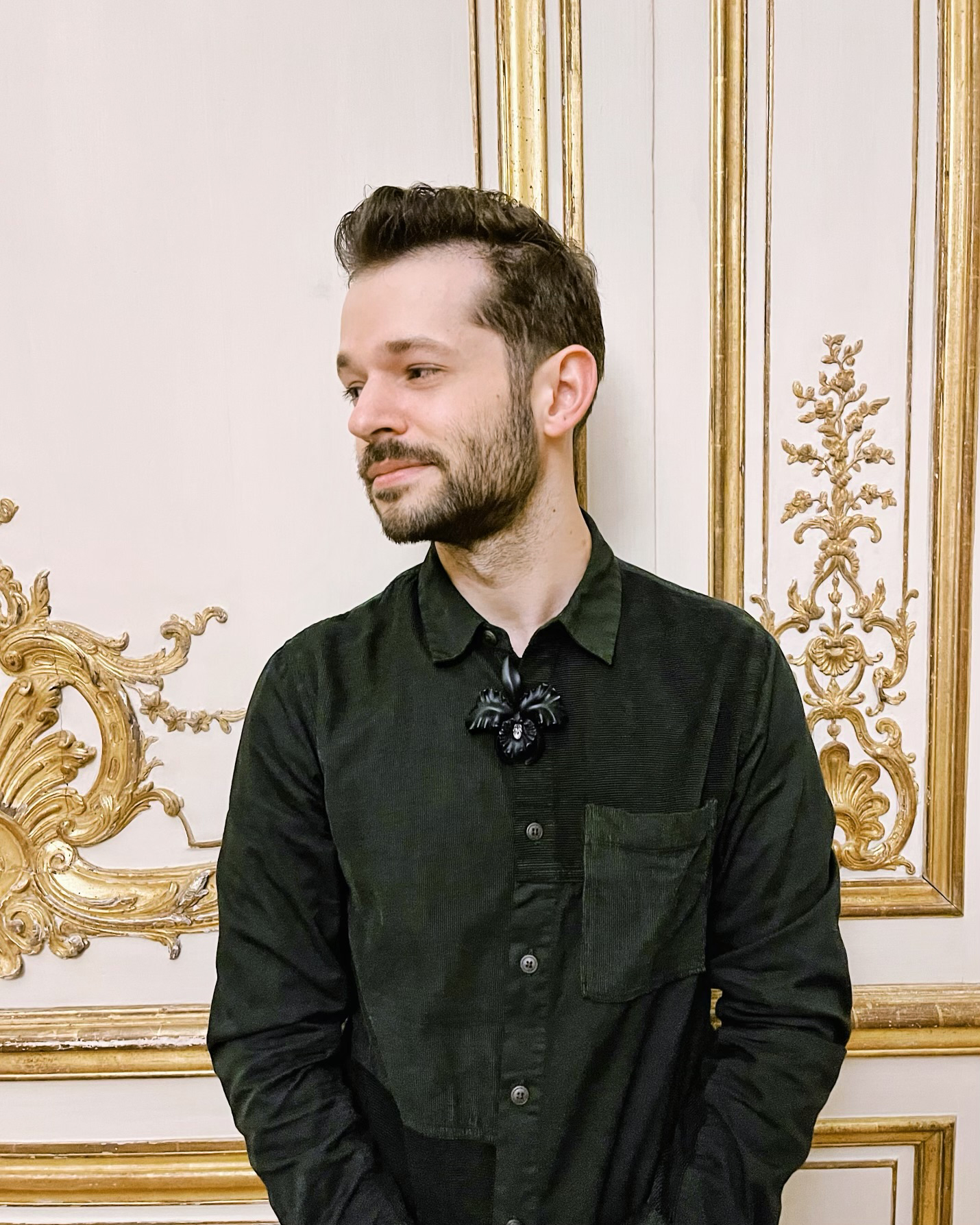
I know you as a friend and the head of Archives & Brand Heritage at David Webb, but tell me a little bit about where your interest in jewelry first started.
Levi Higgs: Yeah, sure. It’s always the fraught question you don’t want to be asked about, where did it all begin? And everyone I know in the jewelry world will always say, “Oh, it’s a childhood fascination. It’s things that I collected when I was young.” For me, I had this little cabinet of curiosities, literally, that were tiny little poly pockets or glass dice or these miniature things that were jewel-like. And there’s bullet points throughout my life of going antiquing with my aunt. And then finally when I got to college, I was studying art history. I was really into Victorian genre scenes, which you really are looking at the objects in the room and dissecting the meaning of these things.
And maybe in a moralistic way, through that, I discovered the ability to study decorative arts. And jewelry is just kind of the ultimate decorative art. It doesn’t necessarily have a function or a purpose in the way that a textile or a vase or a chair does. So after I studied art history in undergrad, I went to a master’s program in New York at Parsons that’s taught in conjunction with the Cooper Hewitt, and I focus specifically on jewelry history. It’s just always been a fascinating world to dive deep into.
And I guess for someone who has a degree in the history of jewelry, what would you say is a misconception that people might have as just casual observers versus someone who’s studied it from a long historical view?
Maybe that it’s frivolous. I mean, it sounds very niched and very like, “Oh my gosh, what good are you putting into the world with that?” But it’s quite a dissection of social history and context beyond what you would normally think of as, I don’t know, a useless piece of object. But jewelry really does function at all these different levels throughout society. It can be at the highest level, it can be a very common thing. Everyone has wedding rings or things that are important to them in that regard. So there’s always a touch point with someone, which is nice.
And today when we talk about fashion, and I would say there was a period where people were talking about how formal wear is going away and people are dressing up less, but at the same time, it seems like jewelry is going through another phase. Is jewelry still important today in the culture, you think?
Oh, absolutely. I think it’s such a way that, at least a lot of the people I know really demarcate themselves that way of who they collect, what they collect, how they wear it, where they wear it. Sometimes you’re meeting a friend at a dive bar and they’re wearing a very expensive piece of jewelry and you’re like, “Oh my gosh, what are you doing?” But that’s how they express themselves and can kind of put out there maybe subtly what they’re all about or aligning themselves with or their aesthetic.
And today, do you have your own cabinet of curiosities? What are you collecting?
Ooh, good question. It’s funny you asked that in a cabinet of curiosity way, because I’m actually having a custom jewelry box built right now. I don’t have a great jewelry box situation currently, but I’m trying to fix that. I collect a lot of ancient coins and then I have jewelry made out of those ancient coins. I love anything from the store in LA called August. I have a Charles Laloma ring that I love. I have a vintage Van Cleef Zodiac pendant from the ‘70s that I hunted for for a long time and really had to manifest it coming out of the woodwork for me because they’re very hard to find. So quite a good amount, a good collection that’s budding.
And you’re a part of an organization called Gem X. Can you explain what that is and what you guys do?
Sure. Yeah. Gem X is a social club that is firmly based in jewelry. It has all sorts of different members. It has jewelers, it has historians, it has collectors, students, anyone can be a member. We do a lot of wonderful outings and events, whether it’s going through a tour at a museum with a curator to see the jewelry collection or we’re having an event at Jean Prounis’s apartment and getting to see an exclusive moment with her new work. It’s just a way for people who are maybe a little bit younger, maybe new to the industry to once again go behind a velvet rope and have amazing access to this world that might seem intimidating.
And so when you guys are together for some sort of social event, what do young jewelry collectors and people in the industry talk about? What’s important to you guys? Because jewelry is something that a lot of people interact with, but only a select few are connoisseurs in a way that really is on another level. And so I’m curious what this new generation, what’s important to you guys?
It’s a great question. It’s a lot of show and tell. It’s a lot of, “Ooh, show me your ring. Show me your pendant. Oh, pull it out. I want to see it.” So there’s the lovely moment of getting to peacock a little bit with your peers. And yeah, it’s really fun to be able to tell the harrowing stories of, “Oh, I thought I had lost it, but I found it. Here it is. It was in the drawer forever and I finally pulled it out.” Or me telling the story of finally getting my Van Cleef pendant from the place that I got it. I don’t want to divulge too much, but there was a harrowing story about how it came to be, and it’s fun to share and kind of swap war stories, if you will.
There’s also a lot of discussion in fashion and elsewhere about this idea of gender-neutral anything and jewelry kind of following suit. How do you see this evolving in the future? Where do you see jewelry and specifically men in jewelry and women with different types of jewelry coming together, because it’s like almost like men can then start wearing lots of things that used to be considered for women, but for women, unless they’re wearing cuff links, which they can, but it’s more specific, where do you see that going?
Well, I’m very happy that I’m talking to you who is a brooch convert, I think you could say that-
Yes. No, that’s very safe to say. Yes.
… very confidently. Look, I think throughout history, men were always the ones that were the most bejeweled, just didn’t the sense of the royals, the kings, the Maharajas, all those people were festooning themselves with jewelry to denote their power. And you didn’t really have the same level of like, “Oh, jewelry’s for women,” until, I don’t know, the 18th century, 19th century. When did those norms even begin? I couldn’t tell you. I should be able to tell you probably, but I couldn’t pinpoint it exactly right now.
So yeah, in today’s world of gender-neutral everything, I think if Harry Styles wants to wear a pearl necklace, look what he’s galvanized. They’re everywhere now on guys. I think it’s just about confidence and styling, honestly. I don’t want to get too pointed about it. I think anyone can wear any sort of jewel they want. Yeah, women can wear cuff links. That would look very chic. That’s a very Marlene Dietrich sort of look.
And if you could bring a bunch of jewelry executives from different major houses together and have them understand something about this next generation of collectors and critics and this younger generation, what would you say? What would you tell them? What would you want that thing to be?
I wish that larger companies wouldn’t focus so much on the fashion cycles. You see Paris Fashion Week, New York Fashion Week, everyone has these kind of bullet points in the year that they have to hit with new collections, and I don’t think jewelry functions necessarily in that same way. Like, yes, come out with a new collection, but it doesn’t have to be every season. It could be every two years, three years, because jewelry can sit around longer than fashion sells off the rack. It doesn’t have the same quick turnaround necessarily.
And I think it’s also important for larger companies to get behind popular and upcoming designers. And maybe Dior is a bad example, but Dior has Victoire de Castellane. They’ve really latched onto a great jewelry designer who has created an indelible vocabulary for them that’s very specific to how they make jewelry now and have done for a while.
LV has Francesca, she’s amazing. She does great work for them. And you can even look at Tiffany now, how they’ve revived Schlumberger so much. They’re really latching onto that. And that’s what was happening in the ‘50s and ‘60s when Schlumberger was around and alive and working for them. So to be a big company and have a name attached and a designer’s point of view, I think it helps everyone. I think it obviously raises the profile of that designer. It makes the company have a specific design sensibility. I don’t know. I think other bigger brands could do that a little more.
And today we’re going to be speaking with two different designers with two very different points of view from very different backgrounds, both of them gaining attention in their own light, and one being Emmanuel Tarpin. Can you explain a little bit about how you first learned about his work and what you think makes him stand out?
Sure. Yeah. I was trying to remember how long I’ve actually known Emmanuel and I feel like it’s been quite a while. He came into my orbit when he first debuted a piece at Christie’s. He had geranium leaf earrings that were being sold at Christie’s. And it was the first time I’d heard his name, first time I’d seen his work. And I think either I reached out to him or he reached out to me, truly cannot remember, but we just were in touch and became good friends. I’ve watched him do quite a few different things throughout his career and I think he’s really impressive in how tightly he’s controlled his aesthetic and his aura. And he’s such a nice person, very humble, love him to death. So very glad you’re talking to him.
I would consider you to be the most jewelry aficionado of all aficionados that I know.
Wow.
So what do you see in his work necessarily that you’re like, “Wow, he’s really good,” from a technical point of view?
Yeah, he has a great playfulness with the nature theme. It’s not all just hyper-naturalistic creations of a flower or a leaf or something. While he does do that, he’ll put dew drops on something that are made with certain gemstones. I think there was just a butterfly broach on Instagram that had these beautiful cabochon stones all over the wings that aren’t necessarily true to life, how a butterfly would have. Well, maybe it would have dew drops on its wings, I don’t know. But then there it is captured in this perfect still moment as a jewel. And I am sadly not a jeweler. I don’t know all these technical specifications of how he’s working, but I do think there’s a lot of technical innovation that he can work with with his workshops.
Is there an analog, do you think, to Emmanuel, like a historical analog?
Right. I think there’s a long tradition of people like him who have these very tightly controlled ateliers where he can invite clients in and debut these one-of-a-kind pieces. He’s not producing 600 pieces a year. He’s got this very nice way to unveil things for people. And I think that’s an important thing that he’s able to do in his beautiful apartment in Paris. I’m sure he’ll tell you all about it, but that’s exactly how he works, is connecting one-on-one with clients. And that’s the best way that jewelers these days are operating.
And the other person we’re talking to is Jean Prounis. Tell me about her, because I think there’s definitely kind of an antiquities vibe to her work. Tell me what you know about her.
Totally. She’s very inspired by, yes, antiquities, but also personal mythology that she has. She has a lot of connections to New York. I’ve had an evening in her beautiful West Village apartment where she talks a lot about her grandparents and her family history and a nightclub that was in New York in the ‘40s and ‘50s. And so she’ll take these moments from her life and expound around them with jewelry. So it’s this nice crosscurrent of, yes, there are a lot of jewelers who maybe look at antiquity or the past, but she’s doing that through her own personal life lens and it makes it so much more impactful.
I love the project she did with a house. She had this custom dollhouse built. It’s a great story. And the object itself of the house with the jewelry in the houses as people and persona, it was fascinating. She did a great job with it.
There’s a lot of designers out there, especially today with Instagram, and people have access to anything that they would want. What kind of qualities do you see in both Jean and Emmanuel that are unique for their generation, if you will?
I guess I sort of said it with Jean, but I think they’re both able to work within the context of jewelry history, but bring their own personal auras to their work. That is what is making someone come back to these new upstart jewelers. It’s this specificity that they have that is enticing someone to come and want to invest in their work as kind of a new name on the scene. And I say new, they’re very established jewelers at this point, but they’re also able to bring a unique perspective to what they do.
Where do you see jewelry evolving? Do you think that we’re still, even in the future, maybe in the next 10, 20 years, do you see the styles are rapidly changing or are we actually kind of regressing in a way? Or is it going to be more about the handmade? Where do you see-
I think, at least something I crave and I like seeing, and I feel like I’ve seen it more and more recently is jewelry that’s narrative. I have a broach that I commissioned for my 30th birthday by David Michael Jewels, and it’s extremely narrative. It has all these hidden things that I wanted put in there that symbolized things in my life and whatever. It was a very heavily symbolic piece to me. And I see a lot of jewelers these days referencing things or bringing in imagery or stones that mean certain things. So there’s a lot of symbolism that’s involved with jewelry these days, and I think that’s nice.
It’s not just sort of, ooh, a sleek, minimalist bangle, which is also great, don’t get me wrong. But I just seeing that kind of heavily laid in narrative in jewelry, I think it can add a nice layer to something that someone’s inevitably going to ask about. Like if you’re wearing a very stunning jewel and you’re like, “Oh, tell me more about that.” There’s a lot to say, then. There’s a lot to reveal about yourself in that moment, and I think that’s really special.
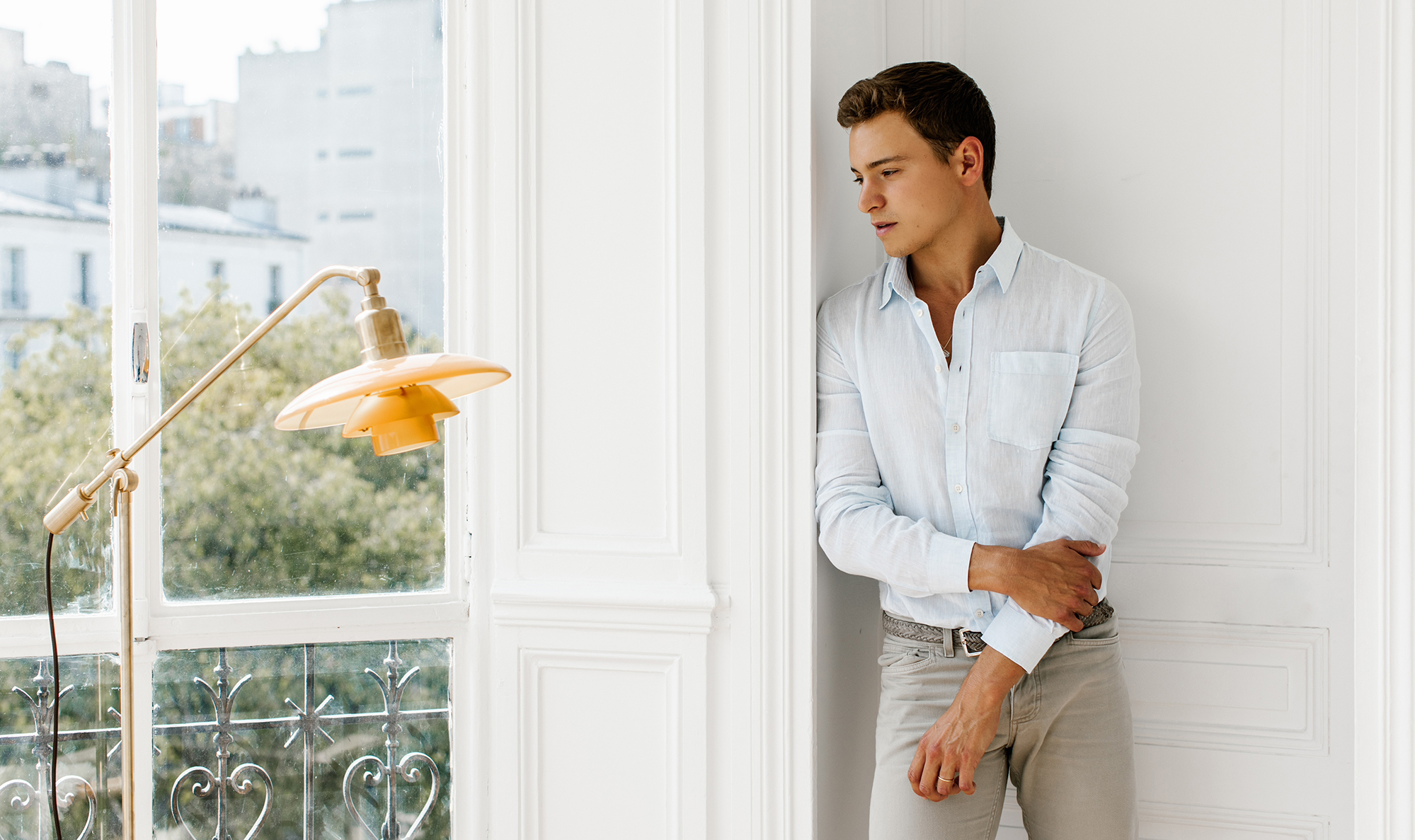
(MUSICAL BREAK)
First up, Emmanuel Tarpin. Barely in his 30s, Emmanuel skyrocketed to the scene when he created his own atelier for hot jewelry in 2018 after cutting his teeth at Van Cleef & Arpels in 2019. He won Breakthrough Designer of the year for the magazine, Town & Country. The New York Times called him a star in the high jewelry firmament, and he’s collaborated with the ultra exclusive watch brand MB&F. Even Rihanna has worn a pair of his epic earrings.
I caught up with the designer from his home in Paris to discuss how his love of sculpture and the natural world has created meaningful and oh- so-delicate works, only about 30 to 35 a year, depicting everything from a jellyfish with tentacles made with sparkling diamonds, to geranium leaf earrings, sculpted in anodized aluminum and gold.
I read that your parents saw you hoarding, modeling clay as a child and encouraged you to take classes and sculpture. Is that true?
Emmanuel Tarpin: That is absolutely true. When I was a kid, I used to steal modeling clay at school to create very tiny and small sculpture to create small mushrooms or nature-inspired things. And my mother noticed and she proposed me to join a sculpture sessions, just to try. And of course, I was very excited about because I was really young. And that’s how actually it started.
How old were you?
I started sculpture, I was maybe eight or seven.
Oh, wow.
Very young.
That’s very young for a kid to be interested in sculpture. And so how long did you do that for?
I practiced sculpture during 13, 14 years.
Oh, wow. Okay.
It always has been a big passion and it was really only on clay.
And then how did you transition from that to jewelry? What was that journey like?
First, it started with sculpture as we just talked about, but also I always had a passion for gemstones. Still at my parents’ place, I had a big collection of rough gemstones, so that’s quite funny. And I used to go with my dad in the mountains to get some rough quartz, amethyist and all of that. So I would say that’s how it started, actually.
Did your parents encourage… I mean, it sounds like they encouraged this sculpture, but were they excited about the jewelry part? How did you decide what to do?
I mean, they were very curious and they encouraged me, for sure, but they didn’t know really about it. My mother loves jewelry, but she doesn’t wear that much jewelry. But my parents are both very curious and they love to discover. So they were very open-minded, and so they were very surprised but at the same time, they pushed me to explore this new passion.
And so where did you train? I heard that you were apprenticing at Van Cleef, I think?
Yeah. I studied in different shops first. Then I studied in Geneva in the HEAD School of Art and Design. And then I worked in a jewelry workshop in Paris working for high jewelry for Van Cleef & Arpels. It was an incredible experience because for me, when I have a passion, I want to know everything about it from the first inspiration to the final piece when it’s about jewelry. So it was really essential for me to work in a jewelry workshop first to understand all the different craftsmanship, the techniques. And so that’s how I started. And it was the best because I was in high jewelry workshops, so it was really precise, and I was working with much older jewelers than me. And so the best way to learn, I would say.
And so how long were you apprenticing for before you started on your own?
I worked in the high jewelry ateliers during approximately four years before starting my brand, because, as I said, it was amazing to learn about all these different techniques, but also was a bit frustrating to not creating my own pieces. And always during lunchtime, I was trying to do a few sculpture works doing wax carving or trying just experiment new materials, always during the little lunch break.
And when you decided to go out on your own, was that a difficult decision for you?
I’m someone who can’t stay still, actually, so I love to experiment. I love always to evolve. The worst for me is to get bored. So I always love to try even when it’s risky in a way, but I just needed it at that time. I wanted to take that risk to explore my creativity, what I wanted to propose. So it was quite natural and very spontaneous, and that’s always the way I act.
And so what did you do? What does a young jewelry designer do when you create? Did you create a collection at first, or how did you-
I actually never created a collection. I always work on one-of-a-kind pieces, and I’m very inspired by nature, but I never show through collections. I prefer to create one-by-one pieces this way. That’s it. I don’t want to feel stuck. I just want to keep the most freedom as possible.
And so who was your first client? Who was willing to say your very first pair of earrings? How did that happen?
Actually, my really first piece for this pair of earrings has been sold at Christie’s in New York.
Oh, that was your first ever, that was your first sale?
Yeah, exactly. That was really my first.
Oh, wow. Wow, that’s very special. Tell me the story about how that happened.
I knew some people at Christie’s Geneva, and when I started my brand, I had a lot of ideas about creating pieces, but I’m definitely not a businessman and I didn’t know all the jewelry clients, high jewelry clients. It’s such a special market. I wanted at that time just to ask for advices from the Christie’s team. And I was coming to New York at that time, and I just asked for an appointment and I showed them my first pair and they proposed me to put it in auction for the Christmas sale in New York. So I was a bit terrified, but at the same time I was very impressed and very honored. And so that’s how it started. And the piece has been sold very well, and I’ve been very happy of it. That’s how my name started to spread out a bit.
If you had to explain to somebody, like a prospective client, a new client who’s never seen your work before and you haven’t been able to show them anything, and they said, “Well, what is your jewelry like?” How do you explain your own work to somebody?
I think it’s all about your own interpretation or your own sensitivity. But first, most of my pieces are very inspired by nature, but also I don’t do only nature-inspired pieces. I love to explore and also my clients can be very inspiring in that way. But I would say my work is really focused about contrast. For example, contrast of texture. I love to work on the sparkle of the stones and the map of the metal.
And the texture, I think, it’s really essential because a piece of jewelry has to be something very sensitive and very essential in a way because it’s directly linked also to the body. I also love to work on contrast of colors. I also love to try new materials. For example, aluminum, titanium, gold, but also rock crystal, bronze. Experimenting is a big thing for me so I love to have a new story to tell in each new pieces.
How many pieces do you make a year, about?
It’s always changing, but I would say approximately 30.
Okay. 30 actually sounds like a lot because I mean, you are the one doing it, so that’s a lot of designs. What is your creative process from beginning to end?
First I would say I’m traveling a lot. That’s part of my inspiration. I always travel a lot and I love to live a lot of experiences, meeting new culture, new people. For example, four months ago I was in Mexico to visit the open mines, to meet the miners, to understand the mine-to-market, the human condition about the environment as well. And I will be in Colombia beginning of August to visit the emerald mines. All of that is very inspiring because there is always a story behind a piece.
So when I start, I have an inspiration. Everything start with some sketches. I always have a notebook and a pencil with me to do quick sketches. Then quite often I will do wax carving because I still love to keep the sculptural aspects of jewelry, and I need to have very quickly this 3D vision of it. Then I will talk with the jewelers. We will start by creating a maquette. Then I will find also the stones, because I chose all the stones myself. And then that’s how it goes.
Obviously, Rihanna was a client of yours and wore a piece of yours, and that seemed to be something that will always be mentioned in a biography of yours. With your clients, do they tend to be younger as well, or are your clients sort of all different ages? For high jewelry, do you find your clients younger and they might feel more comfortable with your designs because they are also younger? I’m just curious.
I have young clients, but I would say they are not only young. I have all different ages of clients. Also, I have a lot of men as clients, not only women, from different countries. So it’s quite mixed, I would say. And I love that.
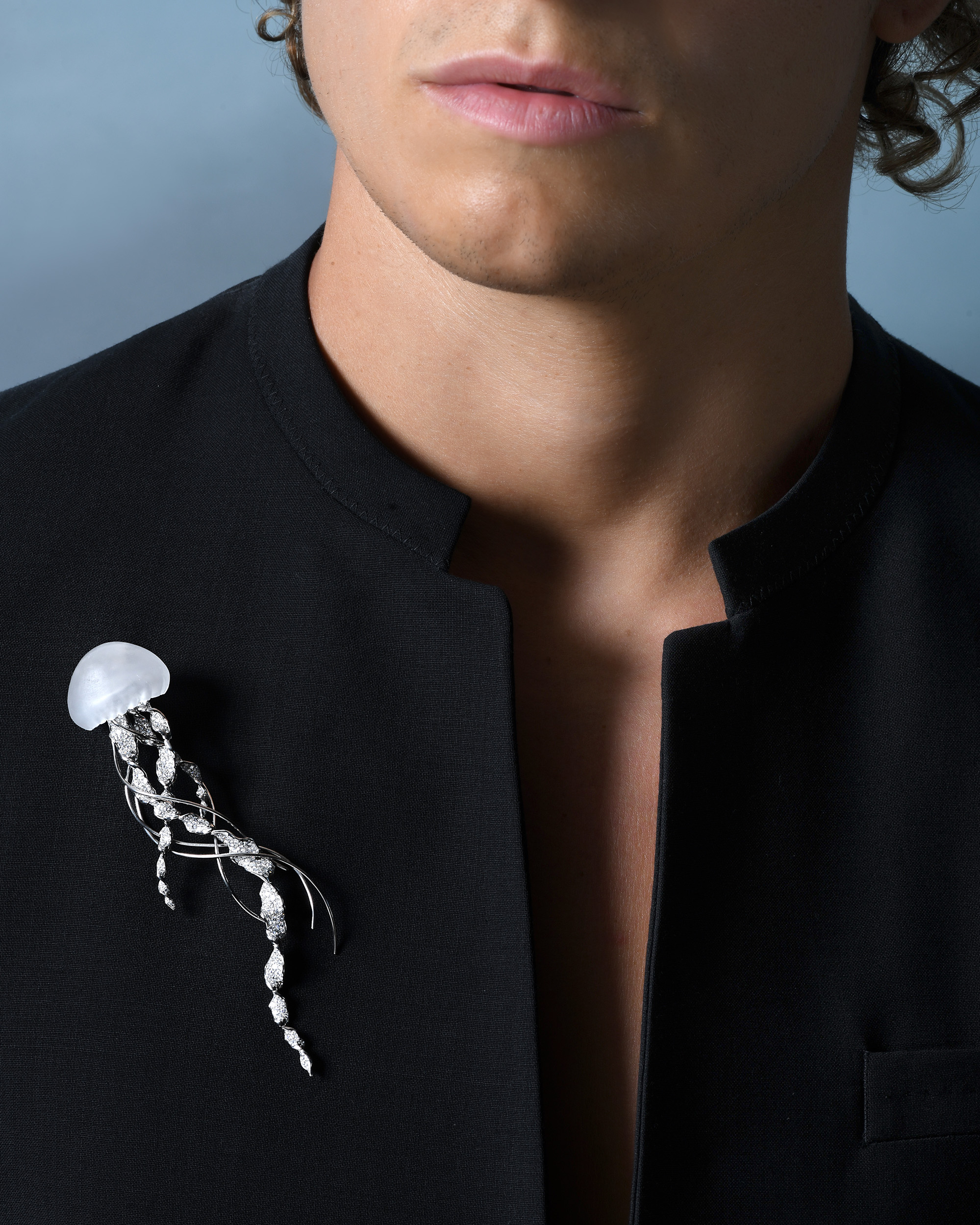
And for the younger clients, what do they look for that might be different from an older generation?
I don’t know if it’s really focused to young, but maybe the younger people are more looking for something unique, one of a kind, because as I said, I do only one-of-a-kind pieces, even the smallest one, because I believe that we are all unique and we all want something that nobody has. I think that’s something really rare now. And I love to make a jewelry piece special for them, so that’s a big thing.
High jewelry is a very specific world and very special world, but have you ever been tempted to create pieces that are more democratically priced, that are made in multiples, obviously?
I truly never really thought about it because when I design something, it’s more about following my inspiration so I’m not thinking really about the price. What the most important for me is more to do something unique and one of a kind. Then it can be very different. Sometimes I do much easiest pieces, more simple, more pure. And sometimes it can be something like nature inspired with a lot of gemstones, so I’m not stuck. But I don’t think the price is not something I start with when I design the piece.
And I guess if I were to ask you, how would you describe the culture of jewelry today, what is the mood in terms of what gets your clients excited when they walk in the door that maybe was different 10 years ago?
I think now it’s really, I mean, luxury, it’s not only jewelry, luxury in general, it’s really focused about marketing, communication, and we forget the product itself at the end. And me, I’m really defending the fact that jewelry is an art, as I said, and I love to give emotions through my pieces, and I want every pieces to be like an experience. I think that’s such a gift and I feel very lucky to leave that every day. For example, sometimes when I deliver a piece, a client can cry because it means so much for him or her. And I think that’s the best gift ever because, for me, luxury is really here to create something special for someone special.
I’m really bad about marketing. I don’t have any PR team or whatever, and I love to share about my work. I love to explain because it’s a passion, but still I want to focus more about the creativity than the market itself. For me, jewelry is not a market. For me, jewelry is an art. So it’s just something different. I think there is different kind of jewelry, and I think that’s good. There’s jewelry for everyone, and that’s it.
And I guess my last question would be, do you feel, as a young person in high jewelry, do you feel welcomed and accepted by the high jewelry world? Or is it kind of difficult to be a young person without PR, doing his own thing, pushing what you do as an art form?
Actually, I don’t think you have to feel welcome in the high jewelry world because, as I said, there are so many different kinds of jewelry. You have the big brands, you have independent jewelers. There’s so much creativity and so many different styles. So I think you don’t have to feel welcome. You just have to follow your own vibes, your own emotions, and so that’s what I do. Of course, I’m very curious and I’m very open to talk and to meet people, even other designer in jewelry, but I’m just continuing my way and that’s it. I don’t need to feel welcomed or not.
(MUSICAL BREAK)
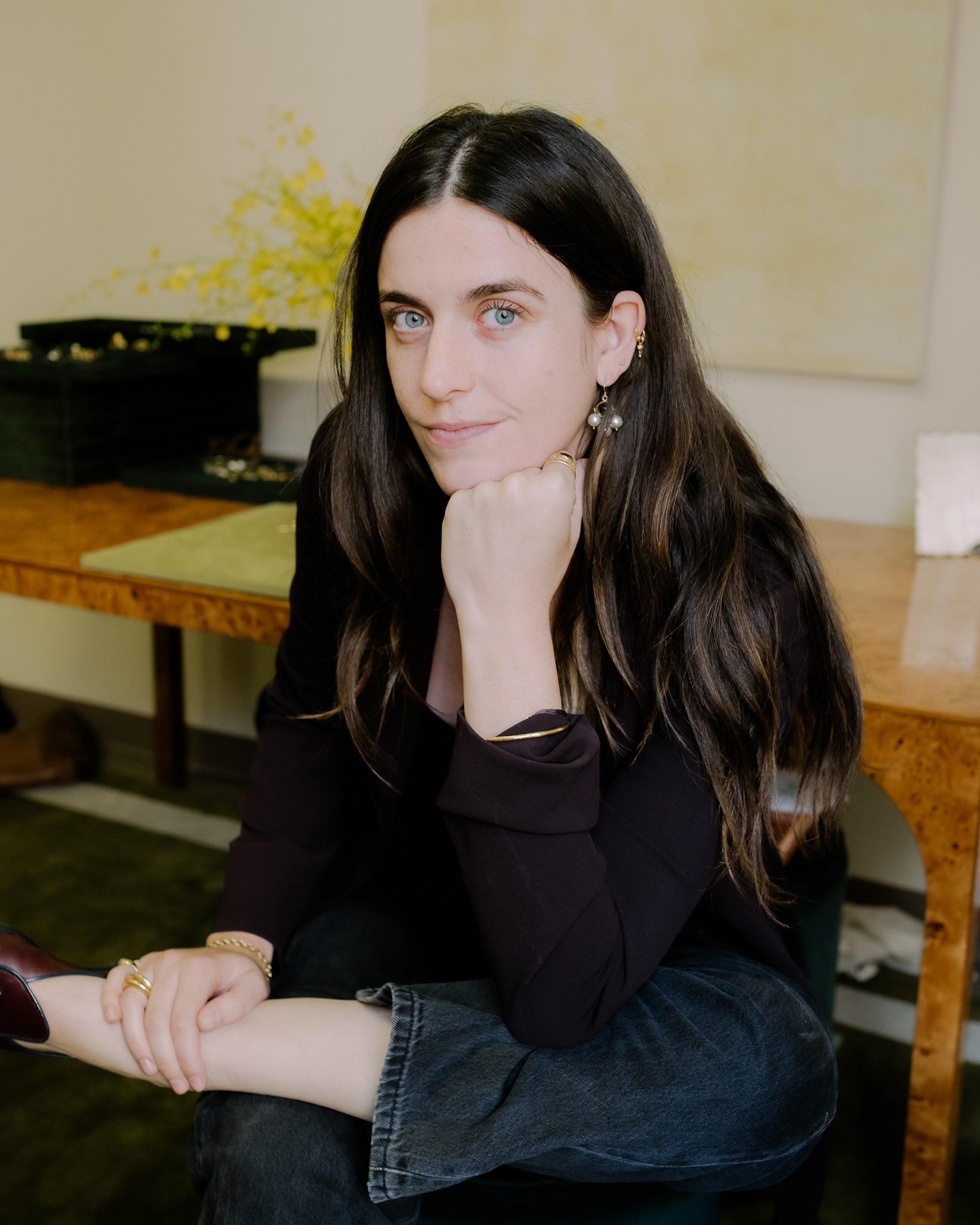
My next guest is Jean Prounis, whose fine jewelry line is based in New York and has a clear identity of wearable, fashionable, and soulful pieces that echo the ancient world, but these aren’t simply nostalgic reproductions. Instead, the coolest ice entrepreneur creates pieces that appear universally chic. And her work has struck a chord with all of the right people. She’s collaborated with the likes of Gucci and the booming fashion brand, Bode. I caught up with Jean from her Manhattan atelier to talk about her views on sourcing the right stones. Where are the ideas for her pieces come from, some of which look like they were pilfered by a time traveler with amazing taste and what she and her generation bring to the world of jewelry that’s truly unique.
Did you grow up in New York?
Jean Prounis: No, actually, and I was listening to your other podcast. I’m from Long Island.
Oh, okay. We’re New Yorkers. We don’t say that.
We’re New Yorkers, yeah.
We don’t say that. We don’t say the dirty Long Island word.
Jean Prounis:
[inaudible 00:35:58].
So you grew up on Long Island, but your family is from here, from the city, and it’s a big part of your life now, is this connection to that.
Absolutely, yeah. New York is such a melting pot of inspiration for me. My great-grandparents came over to New York on my dad’s side from Greece in the ‘20s or ‘10s. That’s when the Prounis family really started their roots in the city. My mom’s side’s also New York so we’re very rooted here in the state and it’s amazing.
And your grandfather ran a nightclub, if I’m not mistaken. Tell me a little bit about that.
Yes, yes, the Versailles. It was a separate club, cabaret club of sorts that was Midtown, which is now having a renaissance, which is amazing because that’s where our studio is located. But the Versailles was located right across from the Waldorf Astoria and had its reign from the ‘30s to the ‘50s. It was a beautiful restaurant full of splendor. All of the silverware was silver, porcelain plate, 10-gouache menus, and then the cherry on top was the entertainment. So my great-grandfather, Otto Prounis, worked a contract with Edith Piaf for her first US residency, and so-
So your grandfather had this nightclub, but he was also somewhat of a bibliophile in terms of-
It was my great-grandfather-
Oh, your great-grandfather.
… who had the nightclub.
Oh, sorry. Your great-grandfather had the nightclub. I thought you were a little bit young for that, for your grandfather! Your great-grandfather had the nightclub, but your grandfather had a book collection, if that’s-
Yeah. He really loved his Greek heritage and had an incredible library of books about predominantly ancient Greek architecture, culture, literature. So growing up when I’d visit him, because they lived in Florida later in their life. They retired there so I’d go with my parents to visit throughout my childhood. I’d spend hours with him in his library going through these books, which have really created Prounis, the brand, the jewelry line. If it weren’t for those books, I mean, I’d probably find another way to it. But there’s so many pieces that I’ve designed that are really pulled out from these books. So lots of artistic books, I guess, about ancient culture.
How many books are in this library or this collection?
Well, I mean, he had hundreds and hundreds of books and what I have kept, I mean, fills my apartment.
Amazing. And so how did you first decide to go into jewelry? What was that journey like for you?
It was a natural progression because I didn’t initially go to school for jewelry. I went actually for biology. That was a really big interest of mine at that part of my life. But I was always interested in working with my hands, which lab sciences kind of speak to in a way. But there was this creative element that I always had enjoyed working with. It wasn’t until about halfway through college where I was really like, I love the sculpture classes I was taking, and I decided to kind of take a class one summer in ancient metalsmithing, which is so niche, but it really ticked a box for me and clicked, so I’m so happy. I so resonated with those techniques.
Were the ancient techniques different from what we would consider now to be jewelry-making techniques?
Yeah, definitely. I mean, they’re still deeply used today, and one of my things is really preserving those techniques in our line now. But a lot of them, they’re highly labor-intensive. So of course with the birth of technology, so many things have been lost to that. So there’s certain skills like granulation and chain-making and just full on hand fabrication from, say, sheet or wire, which is the DNA of all jewelry. That’s what I was taught in those classes in the summers that we use to this day. And also use modern jewelry techniques as well but it’s all about balance.
So you took this class and then did you start selling pieces first before you launched into it?
Not at first. So I took the class, started to really learn about ancient jewelry while taking the class. It was starting to really ring a bell of this past I had with my grandfather, because he had passed at this point, remembering these pieces that he’d shown me in the books and how… It really just came together. It felt like a really natural familial connection in a way, a great way to connect with my heritage.
And then this idea of materiality of 22 karat, which I finally found my way to after I kind of honed my skills a bit more, because it’s not the cheapest of material by any means. The material is also what I really fell in love with. 22 karat is just this incredible lustrous butter of a metal. I can’t believe how, in a way, recyclable it is and how tactile. There’s just a wealth of technique in this one metal, which is incredible.
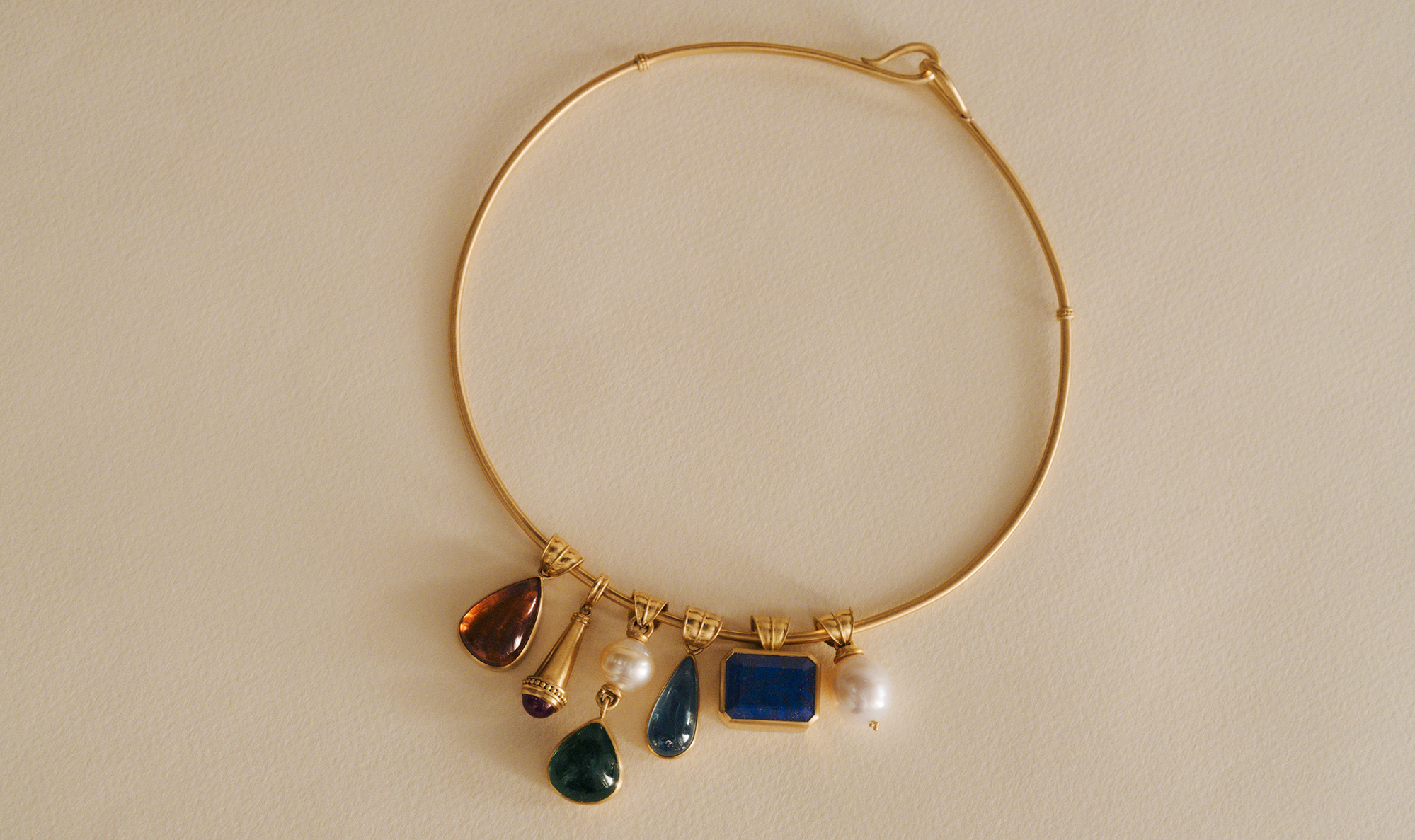
And how is your studio set up today? Are you still making everything yourself or do you work with a team?
No, I wish. I love making, so it’s such a treat, too, when I do. But now, I mean, we’re entirely committed to making everything in New York. So we’re here in the jewelry district on 48th Street, and we have a studio in-house where we have a couple of jewelers, Devin and Elizabeth. And then sometimes I dabble these days for more prototyping or one-of-a-kinds. And then we work with a ton of different artisans in the jewelry district who help us, anywhere from setting to fabrication to engraving and lapidary, so it’s an incredible district here that we’re really dedicated to preserving.
And when I interview people in the jewelry world, I mean, one thing that I’m always fascinated with is the selection of stones and how these work together. And I think I read somewhere where you try to find stones that maybe work with this sort of antiquities vibe that you have going on. Can you tell me a little bit about how you source these stones and what you look for in them?
Yeah, absolutely. When I first started, I was pretty strict. I would only work with stones that were seen in antiquity, so that leads you to cornelian, lapis, emerald, garnet, I mean just to name a few, sapphire. And then I evolved. Now we work with everything, all of those included, diamond, tourmaline, turquoise. But my selection of stones is really kind of looking at the stone as a micro painting from Earth that was naturally formed. I really look for inclusions. I think inclusions are some of the most magical things that a stone can carry.
What I mean by that is when you look at clear stones that are almost like glass, to me, I just prefer the character of the marks inside of the stones. It’s almost like a bit of a poem in there. It’s about the palette, too. I love monotone, neutral colors. I’m inspired from nature, going on hikes and seeing how the moss of the tree connects with, say, the brown of the bark and how that can speak to an earring in a way. So really drawing from nature for a lot of the palettes.
And I’m curious, in the industry as being a younger voice in a very crowded, competitive field, what do you think you understand perhaps that maybe an older generation doesn’t understand or something that you approach, style and jewelry and fashion and the culture of style, that you think is unique to maybe your generation?
I have so much to learn from the older generation at the same time. But yeah, I think the way I approach design, or I try to, is there’s a simplicity to it. It can be easy. An expensive ring doesn’t have to mean you’re going out on the town. It can be part of your every day. And there’s a casualness, I think, that in general, of course, my generation has brought to culture. I think everything became so casual, which I don’t necessarily lean into so much where I’d wear a tracksuit to dinner, but I think there’s something there with how you can enjoy your objects and your, say, valuable possessions on a more daily basis and take away the seriousness of it.
And what are your thoughts currently about sticking with the system or the fashion calendar? I think that’s something that a lot of people in the creative world, whether you’re working in design or architecture, et cetera, some people said, “Huh, do we really need to revolve our entire life around trade shows or fashion weeks or seasons, per se?” What is your current thinking on that?
I mean, I think it’s unnecessary. I think it should be based off of a designer’s most intuitive sense. Of course, there’s so many different aspects of this, but for me, I try to pull away from it. And sometimes that hurts because I don’t have the necessary assets when, say, someone has budgets to buy. But I feel that it’s more important for me to just make sure that everything lines up with my vision. And rather than putting something out there that’s kind of, I don’t know, half-assed, it just doesn’t feel good to do that. Because I have done that now where I’ve put out, say, earrings that I know might do well because it kind of is an algorithm.
And then now I look back and I’m like, “Okay, we are cutting those out of the line because why did I try to fill this void when I should have just been nourishing it to create something different and more exciting and more akin to our clients and antiquity or something?” There’s this homogenization and commercialization that we’re faced with, I think, as designers that it’s really important to push away from, because I think it can take anyone over, which I think calendars feed into, yeah.
GQ did a story that included you, titled Enter the Men’s Jewelry Renaissance. Do you think we’re in a renaissance for men’s jewelry?
It’s grown. I mean, especially with the specific pieces. We’ve always had a strong male business for, say, wedding rings or bands, but now we’re seeing men really look into more colored stone pieces or pearls, chains in a different approach because our chains aren’t… Sorry, I guess chains have been a men’s piece for eternity, but ours are a little different in that we have this really ornamented clasp that some have diamonds in them, some are just very textured in their gold surface, so different from day-to-day pieces that I’d say have been historically popular with men. But then going back to my design inspiration, Greco-Roman jewelry, men were covered in jewels. A lot of the pieces that I do reference in the line were initially men’s pieces so it’s nice to see that come full circle and I really consider the line to be unisex. I’ve never really gendered it. It’s for whoever clicks with it.
And do you make broaches with it?
We make lapel pins. Well, I mean, they’re not lapel pins, but they’re pins. So we did, for the Bode collaboration, a little three-piece set. One is a stick pin, a ring, and a pair of studs. They all referenced the buttons that we designed for the shirts. Yeah.
Well, The Grand Tourist loves to collect broaches so I’m always curious who’s making them. It’s kind of hard to find broaches for men that are not total peacocking, if you know anything. Yeah.
We do a lot of custom.
Okay, good to know! We’ll talk after the interview.
Thank you to Levi Higgs, Emmanuel Tarpin, and Jean Prounis for making this episode happen. The editor of The Grand Tourist is Stan Hall. To keep this going, don’t forget to visit our new website and sign up for our newsletter, The Grand Tourist Curator at thegrandtourist.net. And follow me on Instagram @danrubinstein. And don’t forget to follow The Grand Tourist on Apple Podcasts, Spotify, or wherever you like to listen, and leave as a rating or comment. Every little bit helps. Till next time!
(END OF TRANSCRIPT)
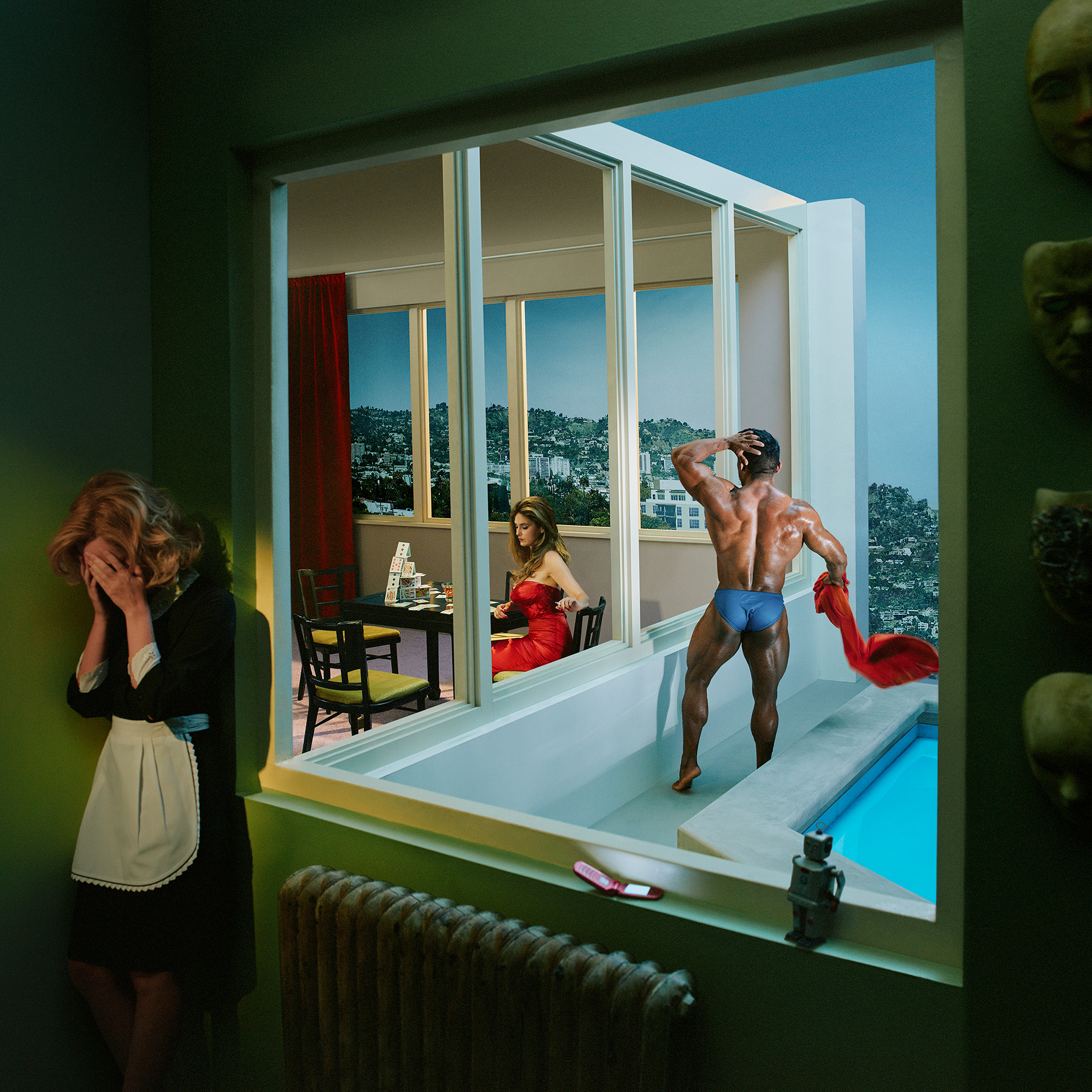
We checked in with our former podcast guests who will be inching through Miami traffic, unveiling new works, signing books and revealing new projects this year.
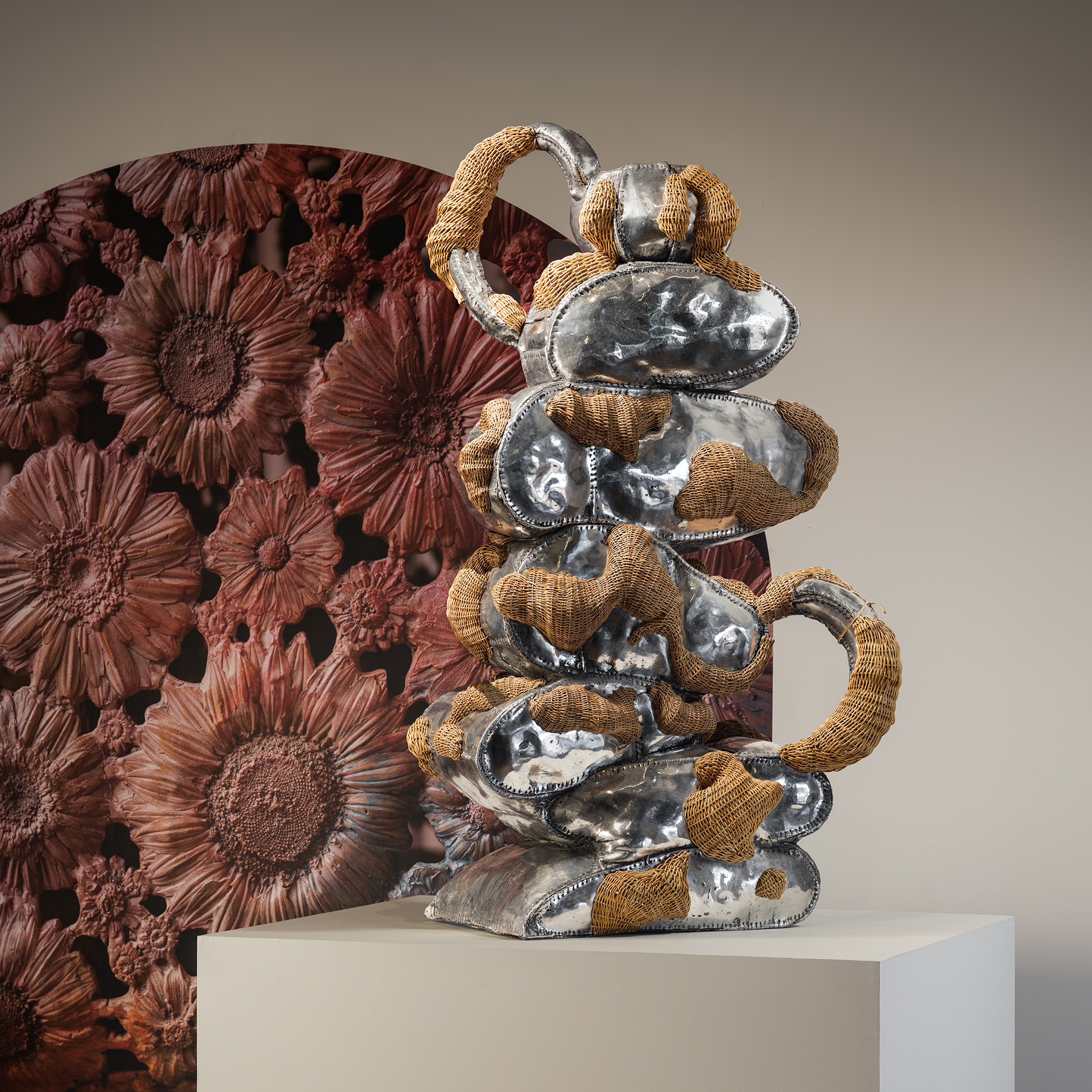
The ecstatic designs of Chris Wolston come to Texas, Juergen Teller's most honest show yet opens in Athens, a forgotten Cuban Modernist is revived in New York, and more.
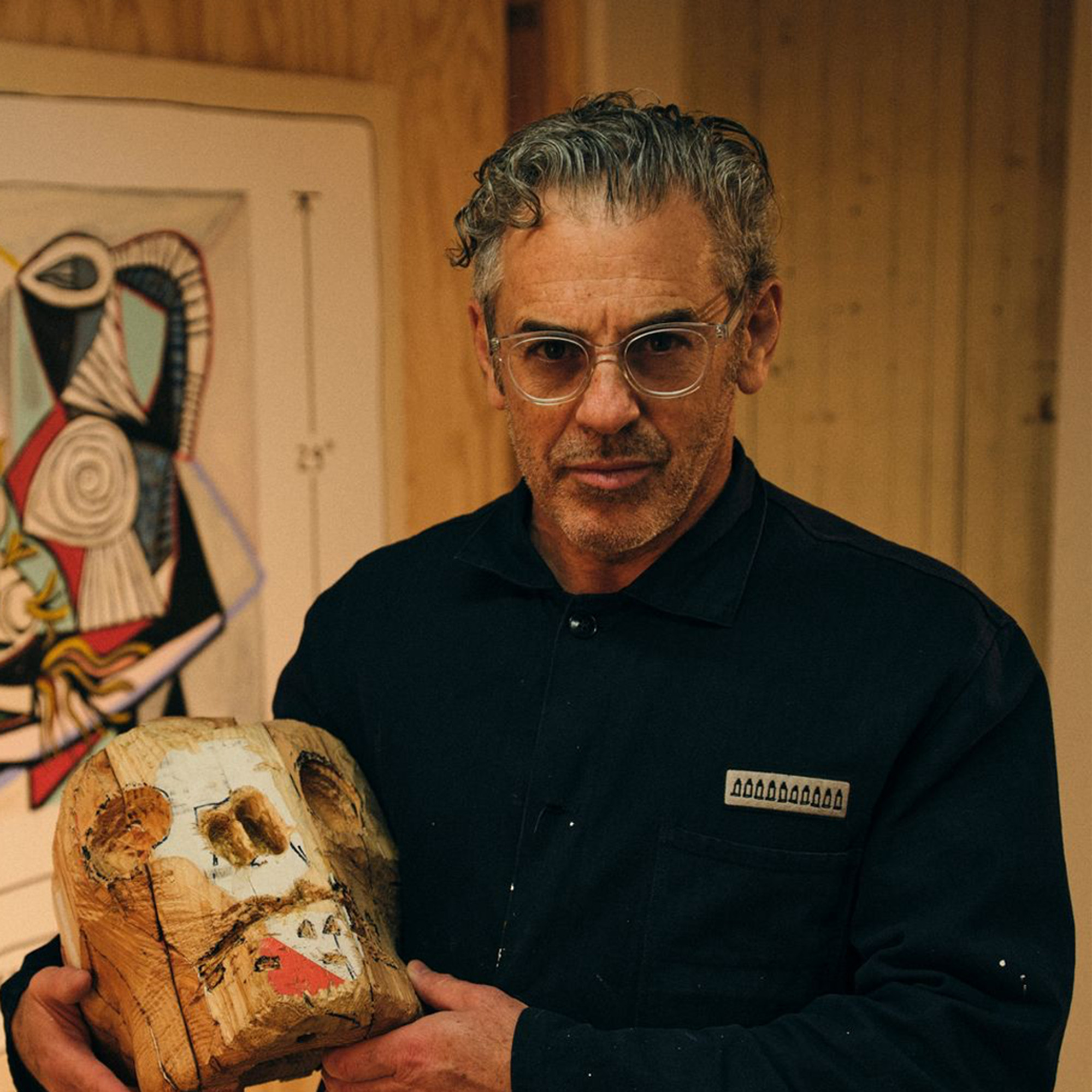
Tom Sachs explores various creative disciplines, from sculpture and filmmaking to design and painting. On this season finale, Dan speaks with Tom about his accidental journey to fine art, how an installation in a Barneys window kickstarted his career, and more.